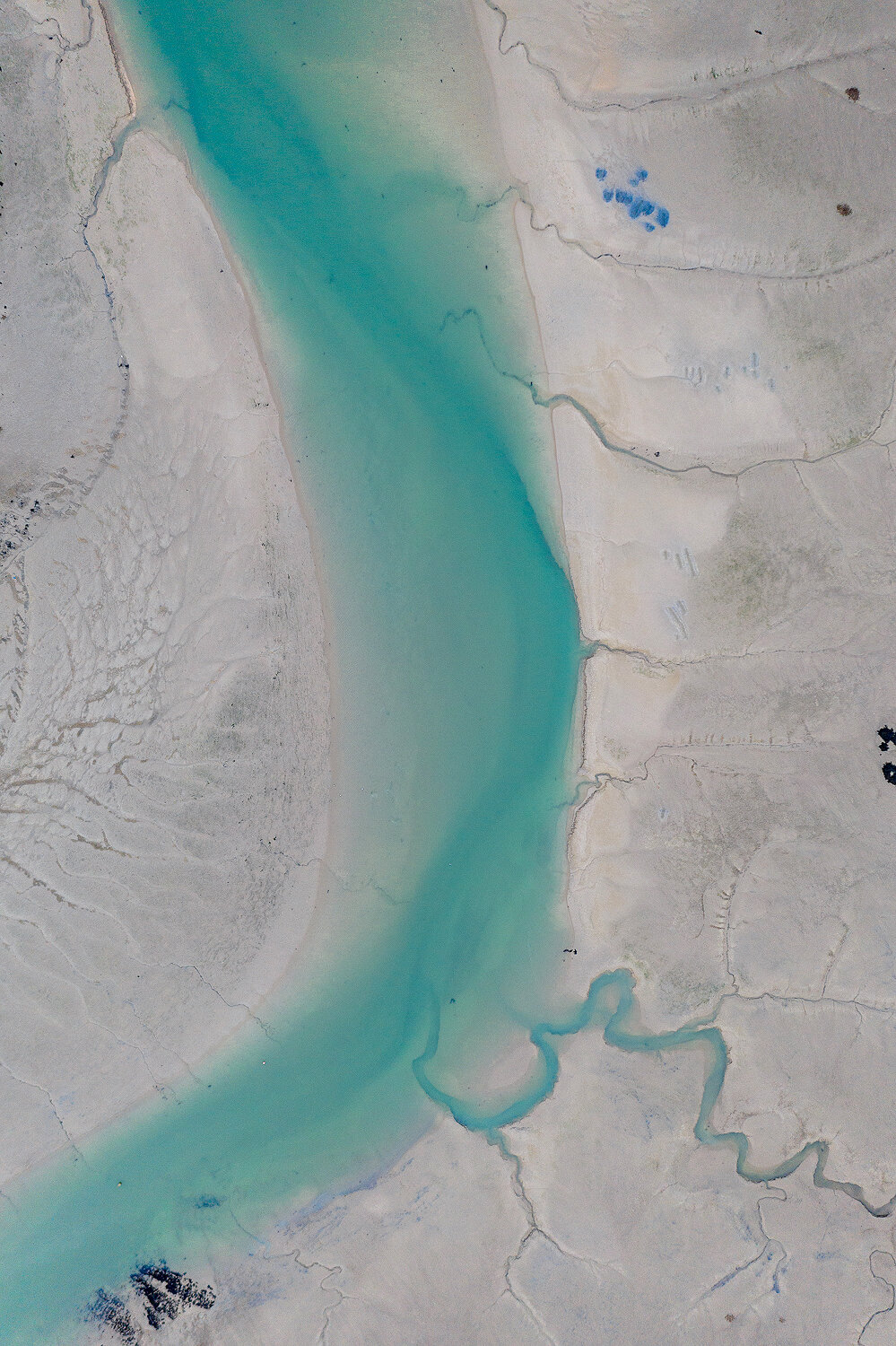Estuaries
The Camel Estuary
50°32'27.4"N 4°55'32.4"W
This project sought to visually present estuaries in a way humans have never seen before, this unique view reveals the stunning abstract patterns and textures that the Camel Estuary posesses. Through the visual exploration I wanted to raise awareness for the threats facing estuarys as a whole and the Camel Estuary was a perfect subject in telling this story, with the whole area being protected under the AONB designation.
Estuaries are the most productive ecosystem on earth, containing more life per square inch than any other environment. They are important nursery grounds for a whole host of life while acting as a barrier, being the guard between the open sea and the land. The waters of the Camel Estuary are rich with life. Salt marshes are a perfect fertile spot on estuaries that host a whole host of flora and fauna such as wading birds that thrive off of the wetland habitat. These habitats are under significant threat from human agriculture which dries out these marshlands and makes them uninhabitable for these animals which are in declining numbers. This is why this particular estuary has been awarded the AONB which helps to protect the estuary from unwanted human impact. Salt marshes face increasing threats from industrial sprawl, which is when human development makes its way into nature and creates paved pathways and roads which are surfaces impervious to water. So when it rains all of this water has nowhere to go but in the salt marsh which not only over saturates it with moisture, but also leaks any pollution from these habited areas into the precious estuarine environment.









